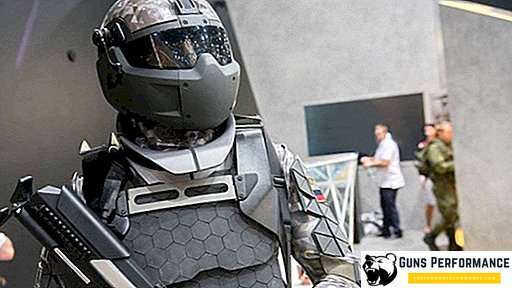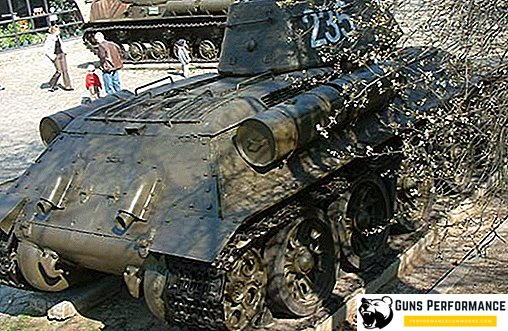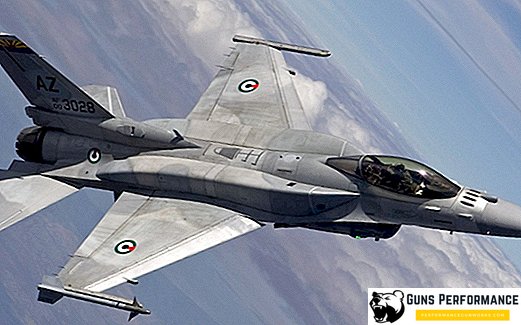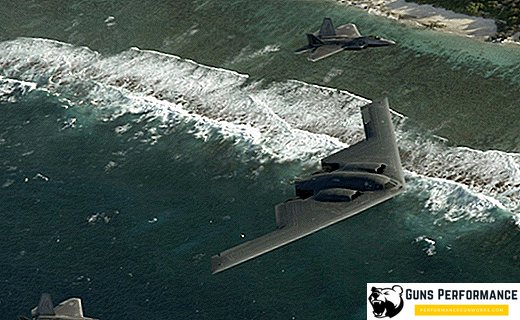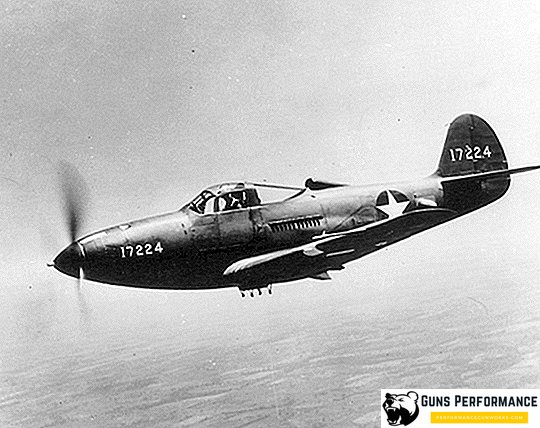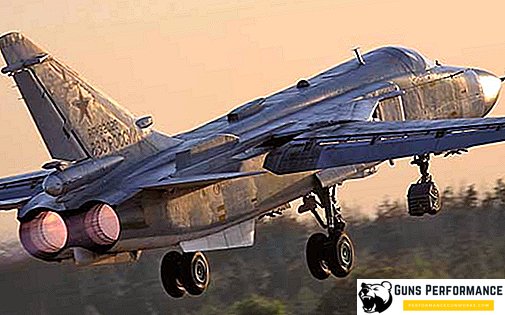After the end of the Second World War, the communist ideology became one of the most common in the world, influencing the lives and destinies of millions of people. The Soviet Union, having won the bloody confrontation with imperialism, confirmed the viability of the socialist path of development of civil society. Education in October 1949 of the People's Republic of China, where Chinese communists became at the helm of a multimillion country, only confirmed the correctness of the Marxist-Leninist ideology in the context of managing numerous civil society. New historical realities have created fertile ground for the parade procession of communism on the planet headed by the CPSU.
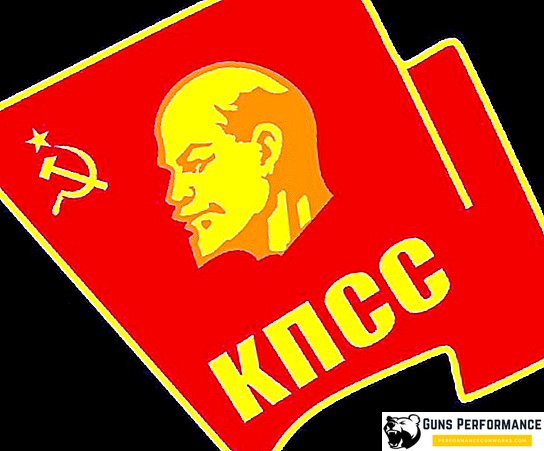
What is the CPSU and its place in history
There has never been a powerful party organization in any country of the world, in any part of the world, and there is still no powerful organization that can compare in its influence on economic and social and social life with the Communist Party of the Soviet Union. The history of the CPSU is a vivid example of the political management of the state system at all stages of the development of civil society. For 70 years, the huge country was led by the party, controlling all spheres of life of the Soviet person and influencing the global political system. Resolutions of the CPSU Central Committee, Presidium and Politburo, decisions of plenums, party congresses and party conferences determined the economic development of the country, the direction of the foreign policy of the Soviet state. The Communist Party did not immediately achieve such power. The Communists (they are Bolsheviks) were forced to go a long and thorny path, often zigzag and bloody, in order to finally establish themselves as the only leading political force of the world's first socialist state.

If the history of the Communist Party of the Soviet Union dates back nearly a century, the abbreviation of the CPSU - the Communist Party of the Soviet Union originated relatively recently, in 1952. Up to this point, the leading party in the USSR was called the All-Union Communist Party. The history of the CPSU originates from the Russian Social-Democratic Labor Party, founded in the Russian Empire in 1898. The first Russian political party of a socialist orientation became the base platform for the revolutionary movement in Russia. Later, in the course of the historical events of 1917, there was a split in the ranks of the RSDLP into Bolsheviks - supporters of an armed uprising and a forceful seizure of power in the country - and the Mensheviks - wing of the party, which adhered to liberal views. The left wing formed in the party, more reactionary and militarized, tried to take control of the revolutionary situation in Russia by taking an active part in the October armed uprising. It was the RSDLP of the Bolsheviks, under the leadership of Ulyanov-Lenin, who played a key role in the victory of the socialist revolution, having assumed full authority in the country. At the XII Congress of the RSDLP, it was decided to form the Russian Communist Party of Bolsheviks, which received the abbreviation RCP (b).
The inclusion of the adjective "communist" in the name of the party, according to V.I. Lenin, must indicate the ultimate goal of the party, for the sake of which all socialist transformations are being undertaken in the country.
Having come to power, the former Russian Social Democrats headed by V.I. Lenin proclaimed their program to build the world's first socialist state of workers and peasants. The basic platform for state structure was used by the party program, the main focus of which was Marxist ideology. Having survived the difficult period of the Civil War, the Bolsheviks began state building, making the party apparatus the main political and administrative structure in the country. The party leadership was based on a powerful ideology, seeking to gain a leading role in the polity. Along with the councils that formally performed representative functions, the Bolsheviks organize their leading party bodies, which eventually begin to fulfill the tasks of the executive branch. The Soviets and the CPSU, which later became known as the Bolshevik Party, retained a close relationship in the leadership of the country, formally demonstrating the presence of representative power.

In the USSR, it was possible to skillfully mask the leading role of the party in the electoral process. Local and town councils of people's deputies acted on the ground and were elected as a result of a nationwide vote, but in fact practically every member of the parliament is a member of the CPSU. The Soviets were completely absorbed by the party structures of the Communist Party, performing on the ground two functions at once, party representations and executive functions. The decisions of the top party leadership were first submitted to the Presidium of the Central Committee, after which it was required to be approved at the Plenum of the Central Committee. In practice, decisions of the Central Committee of the CPSU were often a prerequisite for subsequent legislative acts submitted to meetings of the Supreme Soviet and resolutions adopted by the USSR Council of Ministers.
It is safe to say that the Bolsheviks managed to realize their efforts to achieve hegemony of political power in Soviet Russia. The entire vertical of power, starting with the People's Commissars and ending with the Soviet organs, becomes completely under the control of the Bolsheviks. The Central Committee of the Party determines the country's foreign and domestic policy at that time. The weight of the party leadership at all levels, which relies on a powerful repressive apparatus, is growing. The Red Army and the Cheka become the instruments of power influence of the party on social and public attitudes in civil society. The competence of the communist leadership includes the military industry, the country's economy, education, culture and foreign policy, which was under the jurisdiction of the Politburo of the Central Committee of the CPSU.
Communist ideas for creating a workers 'and peasants' state were realized in 1922, when the Union of Soviet Socialist Republics was formed on the site of Soviet Russia. The next step in the transformation of the Communist Party was the XIV Party Congress, which decided to rename the organization into the All-Union Communist Party of Bolsheviks. The name of the party of the CPSU (b) lasted for 27 years, after which the new name of the Communist Party of the Soviet Union was approved as the final version.

The main reason for changing the name of the Communist Party was the growing weight of the Soviet Union in the political arena. Victory in the Great Patriotic War, economic achievements made the USSR the leading world power. The main leading power of the country required a more respectable and sonorous name. In addition, the political necessity to divide the communist movement into Bolsheviks and Mensheviks disappeared. The entire party structure and political lines were sharpened by the basic idea, the construction of a communist society in the USSR.
The political structure of the CPSU
The 19th party congress, convened after a long 13 year recess, was the first in the post-war period. At the forum, Stalin, General Secretary of the Central Committee of the CPSU, made a speech. This was his last appearance to the public. It was at this congress that the main directions of the future political and economic structure of the country were adopted in the post-war period, a course was charted in the domestic and foreign policy of the Communist Party. The Communists, represented by all sections of Soviet society, gathered at the 19th Party Congress, unanimously supported the proposal of the party leadership on amending the Party Charter. The approval of the participants of the congress was met with the idea of changing the name of the party to the CPSU. The Charter of the party once again secured the position of the first person of the party - the General Secretary of the CPSU Central Committee.

Note: It should be noted that apart from the party ticket, indicating membership in the party, there were no other insignia among the communists. Unofficially it was decided to wear a badge - the banner of the CPSU, which, along with the abbreviation of the CPSU and the face of VI. Lenin depicted the main symbols of the Soviet state, the red flag and the crossed hammer and sickle. Over time, the official symbol of the communist movement in the USSR becomes the icon of the participant of the next party congress and participant of the CPSU conference.
The role of the Communist Party in the early 50s for the USSR is difficult to overestimate. In addition to the fact that the party leadership develops the domestic and foreign policy of the Soviet state throughout its existence, the organs of party power are present in all spheres of the life of the Soviet people. The party structure is structured in such a way that in every body and organization, in production and in the cultural and social sphere, no decision is made without participation and control by the party. The main instrument of the party line in civil society is a member of the CPSU - a person who has indisputable authority, high moral and strong-willed qualities. Of several members, a primary party cell, the lowest party body, is formed on the basis of a production or professional identity. All that is higher is already profile and regional organizations uniting ordinary citizens on the ground according to the ideological principle.

Class composition was also reflected in the replenishment of the ranks of the party. Representing the interests of the ruling class, the Communist Party of the Soviet Union for 55-60% consisted of representatives of the proletarian environment and the Soviet peasantry. Moreover, the proportion of communists who left the working environment was always two, three times the number of collective farmers. These quotas were secretly approved in the 20-30 years. The remaining 40% were from intellectuals. Moreover, this quota has been preserved in the new time, when the country’s population rapidly increased.
Party vertical
What is the CPSU in the new, in the postwar period? This is already a large Marxist party, whose political will and subsequent actions are aimed at creating the dominant position of the proletariat in the country. The General Secretaries of the CPSU Central Committee, as before, perform the functions of the country's top leadership. The main governing body of the party Central Committee was practically a government body in the USSR.

The highest party party organ was the congress. In the whole history 28 party congresses took place. The first 7 events were legal and semi-legal in nature. From 1917 to 1925, party congresses were held annually. Further, the VKP (b) was already going to congresses every two years. Since 1961, CPSU congresses have been held every 5 years. At the new stage, the Communist Party of the Soviet Union held 10 of its largest forums:
- XIX Congress of the CPSU in 1952;
- XX - 1956;
- XXI - 1959;
- XXII Congress - 1961;
- XXIII - 1966;
- XXIV -1971;
- XXV Congress - 1976;
- XXVI -1981 g;
- XXVII Congress - 1986;
- Last XXVIII Congress - 1990
Decisions and resolutions adopted at congresses were fundamental for the subsequent decisions of the Central Committee, the Soviet government and other legislative and executive bodies. At the congress, the composition of the Central Committee of the Central Committee was determined. In the period between congresses, the main work under the party administration was carried out by the Plenum of the CPSU Central Committee. At the plenary meetings, the General Secretary of the CPSU Central Committee was elected from among the members of the Presidium of the Central Committee. Not only members of the highest party bodies, but also candidates for members of the Central Committee participated in the plenary sessions. The authority to make decisions in the intervals between plenums lay entirely on the Politburo of the CPSU Central Committee, which consisted of members of the Central Committee. The newly created collegial body was entrusted with administrative functions to manage the party and the country, which had previously been assigned to another governing body — the presidium of the CPSU Central Committee.

In the USSR, a unique situation developed where the decisions of the party played the main role in governing the state. Neither the Council of Ministers, nor the relevant ministries, nor the Supreme Council adopted a single law without the approval of the party elite. All decisions, orders and resolutions of the Central Committee of the CPSU, decisions of the Plenum of the Central Committee secretly had the force of legislative acts, on the basis of which the Council of Ministers had already acted. In the new time, this trend has not only survived, but also intensified. However, despite the total dominance of the Communist Party in the political and public life of the country, it was necessary to make some changes to the structure of the party organization caused by new political trends and motives. The Central Committee and the Politburo of the Central Committee of the CPSU in the period between plenary sessions and congresses played the role of a shadow government.
After the Baltic states became part of the Soviet state as Union republics, it was necessary to change the party’s structure according to national and regional characteristics. Organizationally, the CPSU consisted of the communist parties of the union republics that are part of the Soviet Union, 14 instead of 15. The Russian Soviet Federative Socialist Republic did not have its own party organization. The secretaries of the republican parties were part of the Presidium of the CPSU Central Committee and the Politburo of the CPSU Central Committee, which was a collegial and deliberative body.

The highest party position in the Central Committee of the CPSU
In the structure of the top party leadership, the collective and collegial management style was always maintained, but the General Secretary of the CPSU Central Committee remained the most significant and significant figure of the party Olympus.
It was the only non-collegial post in the structure of the Communist Party. By authority and rights, the first person in the party was the nominal head of the Soviet state. Neither the Chairman of the USSR Supreme Council nor the Chairman of the Council of Ministers had such powers as the general secretaries had in the Soviet Union. In total, the political history of the Soviet state knew 6 General Secretaries. IN AND. Although Lenin held the highest rank in the party hierarchy, he remained the nominal head of the Soviet government, occupying the post of Chairman of the Council of People's Commissars.

The combination of the highest party office and the Chairman of the Council of Council of People's Commissars was continued by I.V. Stalin, who became head of the Soviet government in 1941. Further, after the death of the leader, N. S. Khrushchev, who was the Head of the Soviet government, continued the tradition of combining the highest party post with the highest executive power. After Khrushchev was removed from all posts, it was decided to formally separate the posts of the Secretary General and the Head of the Soviet Government. The General Secretary of the CPSU Central Committee performs representative functions, whereas all executive power is vested in the Chairman of the USSR Council of Ministers.
The post of general secretary after Stalin’s death was held by the following persons:
- N.S. Khrushchev - 1953-1964;
- L.I. Brezhnev - 1964-1982;
- Yu.V. Andropov - 1982-1984;
- K. U. Chernenko - 1984-1985;
- M.S. Gorbachev - 1985-1991

The last general secretary was M. S. Gorbachev, who in parallel with the post of head of the party served as Chairman of the Supreme Soviet of the USSR, and later became the first President of the USSR. The decrees of the Central Committee of the CPSU from this moment are advisory in nature. The main focus of the country's leadership is on the representation of power. The powers of the party leadership in the management of the country in the domestic and foreign arena are limited.
Collective CPSU governing bodies
The main feature of the activities of the Communist Party of the Soviet Union is the collegiality of the governance structure. Starting from V.I. Lenin, in the party leadership, an important role in decision-making is played by a quorum. However, in spite of the visible collectivity and collegiality in the management of the party, with the arrival of JS Stalin to the highest party posts, a transition to an authoritarian management style is planned. Only with the assumption of the post of General Secretary, N. S. Khrushchev, is there a return to a collegial management style. The Politburo of the CPSU Central Committee again becomes the highest party body that makes decisions and is responsible for the implementation of the program points adopted at plenary meetings and congresses.
The role of this body in the management of public affairs is gradually growing. Considering that all the leading posts in the Soviet state were occupied only by members of the Communist Party of the Soviet Union, it can be said that the Politburo of the Central Committee of the Communist Party of the Soviet Union is represented by the entire party elite, who has full power. В состав бюро входили помимо генсека, секретари республиканских ЦК партии, первые секретари Московского и Ленинградского областных комитетов, Председатель Президиума ВС СССР и Верховного Совета РСФРС. В качестве представителей исполнительной власти в состав политбюро ЦК КПСС обязательно входили Председатель Совета Министров, Министр Обороны СССР, Министр Иностранных дел и Глава Комитета Государственной Безопасности.
Такая тенденция в системе управления сохранялась до самых последних дней существования Советского Союза. После последнего XXVIII партийного съезда в Коммунистической партии наметился раскол. С введением в 1990 году поста Президента СССР роль Политбюро в управлении государственными делами резко снизилась. Уже в марте 1990 года из Конституции СССР была исключена статья 6-я, в которой было закреплена руководящая роль КПСС в управлении государственными делами. На последнем съезде был положен конец гегемонии Коммунистической Партии в жизни страны. Внутри партии на самом высоком уровне наметился раскол. Появились сразу несколько фракций, каждая из которых проповедовала свою точку зрения относительно последующей судьбы партии, ее места в руководстве страны.

Постановления ЦК КПСС носят уже форму внутрипартийных циркуляров, которые косвенно отражают основные направления работы советского правительства. Начиная с 1990 года, партия теряет нити контроля над системой управления страной. Деятельность Президента СССР, функции Верховного Совета СССР и Кабинета Министров СССР становятся определяющими и решающими в жизни государства. Распад СССР как единого государства положил конец существованию Коммунистической Партии Советского Союза, как крупной организационной политической силы.
Сегодня только партийные знамена, сохранившиеся партийные билеты и значки партийных съездов напоминают нам о былом величии Коммунистической партии, которая бессменно оставалась у руля государства в течение 72 лет. По данным статистики, в рядах КПСС на 1 января 1991 года состояло 16,5 млн. членов и кандидатов. Это самый большой показатель для политических партий в мире, если не считать численный состав КП Китая.


